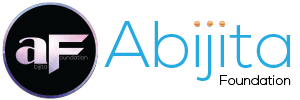As you carry out your day, there will be times when you have to connect to the internet over Wi-Fi — maybe in a coffee shop, airport, hotel, or even a library. It’s convenient to connect without using up your cellular data. But here’s the thing: not all public Wi-Fi networks are safe.
Since these networks are open to everyone, you can’t always be certain who’s on the other end. There could be someone with bad intentions sitting in the same café, running tools to capture your data while you’re checking emails, logging into your bank account, or shopping online. If you’re not careful, they might walk away with your information — and that’s a risk not worth taking.
Let’s explore how you can safely use public Wi-Fi without becoming an easy target.

Why Public Wi-Fi Is Dangerous
Public Wi-Fi might seem harmless, but it’s one of the easiest ways for hackers to steal your data. Most public networks are unencrypted and unsecured, which means anything you send or receive can be visible to others on the same network.
Here are some common risks to be aware of:
- Man-in-the-Middle Attacks: A hacker silently intercepts the communication between you and the website you’re visiting.
- Packet Sniffing: Attackers use tools to “listen in” on the data you’re sending — including passwords, messages, or personal information.
- Fake Hotspots: Cybercriminals can create fake Wi-Fi networks with names like “Free_Airport_WiFi” to trick you into connecting.
- Malware Distribution: Hackers can use these networks to send malicious software directly to your device.
Always Double-Check the Wi-Fi Name Before Connecting
This is one of the simplest but most important precautions you can take. If you’re unsure about which Wi-Fi network is legitimate, ask. To stay safe:
- Ask a staff member for the exact name of the official Wi-Fi network.
- Check for signs or receipts where the network name might be listed.
- Avoid connecting to networks that seem suspicious or have similar-sounding names (e.g., “Cafe_WiFi” vs. “CafeFreeWiFi_123”).
If you mistakenly connect to a fake network, everything you do online could be exposed to an attacker.
Employ a VPN – It’s Your Best Friend on Public Wi-Fi

A Virtual Private Network (VPN) provides a secure, encrypted tunnel between your device and the internet, even when you’re on an open network. This makes it much harder for anyone to intercept your data.
How a VPN protects you:
- Encrypts your data, so even if someone intercepts it, they can’t read it.
- Masks your IP address and location, offering better privacy.
- Blocks dangerous websites and prevents your credentials from being stolen.
If you use public Wi-Fi often, it’s worth investing in a reliable paid VPN. Free versions may seem tempting, but they can be risky, and some even sell your browsing data.
Search for HTTPS When Surfing

You might have noticed that some websites start with “https://” while others only show “http://”. That small “s” stands for “secure,” and it’s important.
When browsing online:
- Only visit websites with HTTPS — this ensures the data between your browser and the site is encrypted.
- Avoid entering sensitive information (like passwords or payment details) on non-HTTPS sites.
- Look for the padlock icon in your browser’s address bar — it confirms the site is secure.
Even if you’re using a VPN, sticking to HTTPS websites is an essential habit.
Disable File Sharing and Auto-Connect Features

Many devices are set to automatically connect to known networks or share files. That’s fine at home, but in public spaces, it can open the door to trouble.
What you should do:
- Turn off file sharing so others on the same network can’t access your files.
- Disable auto-connect to prevent your device from joining unknown networks automatically.
- Select “Public” or “Guest” network options on your device for better protection.
Think of these steps as locking the doors and windows before you leave your house.
Avoid Sensitive Tasks When on Public Wi-Fi

Even with some precautions in place, certain online activities are better left for when you’re on a secure, private connection.
Best practices include:
- Avoid online banking or transactions involving credit cards or bank accounts.
- Don’t log in to sensitive accounts, such as work email or health portals, unless absolutely necessary.
- Always log out of your accounts once you’re done — don’t just close the tab.
If something can’t wait and you’re not fully protected, consider using your mobile data instead.
Keep Your Software Up to Date

Software updates often fix vulnerabilities that hackers try to exploit. Keeping your device updated is one of the easiest ways to stay secure.
What to update:
- Your operating system — whether it’s iOS, Android, Windows, or macOS.
- Your web browser and frequently used apps.
- Your antivirus or anti-malware software — and make sure it runs regular scans.
An updated device is much less likely to fall victim to cyberattacks.
What to Do If You Think You Got Hacked on Public Wi-Fi
Sometimes, despite your best efforts, things can go wrong. If you suspect you were compromised while using public Wi-Fi, act fast.
Steps to take:
- Change the passwords of any accounts you accessed while connected.
- Monitor your financial accounts for any unauthorized activity.
- Run a complete virus/malware scan on your device.
- Notify your bank or service providers if anything seems suspicious.
Acting quickly can help limit the damage and protect your information from being misused.
Public Wi-Fi Is Convenient — Just Use It Wisely
Free Wi-Fi is a useful part of everyday life. It helps us stay connected wherever we go. But just as you wouldn’t leave your wallet unattended on a park bench, you shouldn’t use public Wi-Fi without taking basic precautions.
By confirming network names, using a VPN, sticking to secure websites, disabling unnecessary sharing features, and being cautious about what you do online, you can enjoy public Wi-Fi without putting your personal data at risk.
Be smart, be safe — and enjoy the internet wherever you are.
Bijay Pokharel
Related posts
Recent Posts
Subscribe

Cybersecurity Newsletter
You have Successfully Subscribed!
Sign up for cybersecurity newsletter and get latest news updates delivered straight to your inbox. You are also consenting to our Privacy Policy and Terms of Use.





